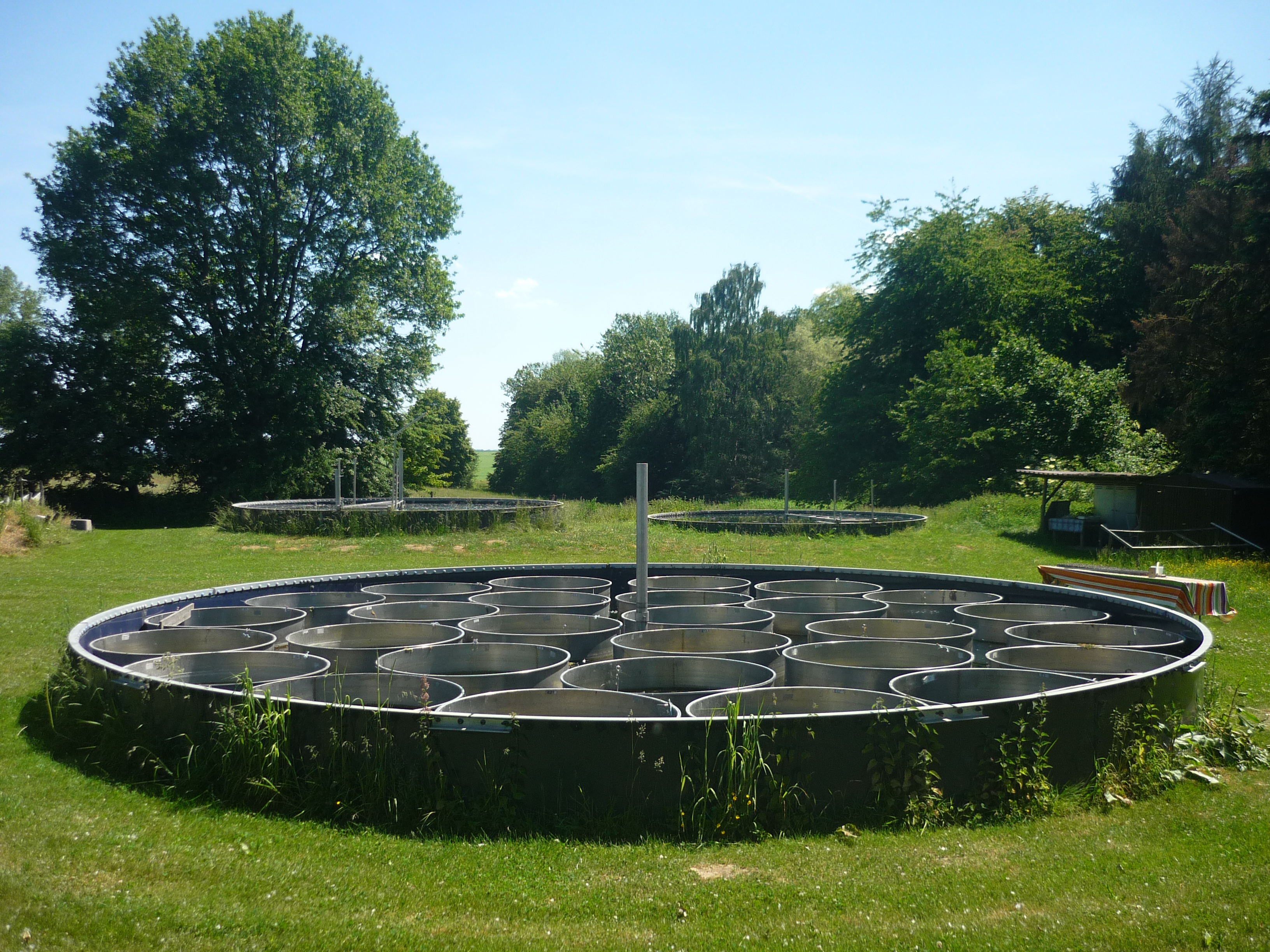We are your Partner for Aquatic Higher Tier Effect Studies of Plant Protection Products and other Chemicals
Standard risk assessment is designed to be protective which is not necessarily realistic. There are several options to refine an assessment using higher tier studies. We design and execute such studies under GLP conditions, assessing aquatic effects in order to provide more realistic effect data and reduce the uncertainties in extrapolation to a field situation. Necessary fate and exposure analysis is conducted in close co-operation with our chemical departments in-house.

Tests with standard test species under modified exposure conditions
Standard tests are usually conducted under worst case exposure conditions, e.g. constant concentrations in water-only systems. However, in the field bioavailability might be lower if the toxicant has a high potential to adsorb to organic matter or the exposure pattern is characterized by one or several peaks.
To address more realistic exposure situations, we conduct tests in water-sediment systems and/or with peak exposure patterns. Examples are:
- Lemna sp., Myriophyllum sp., Daphnia magna tests in watersediment systems with exposure periods of different lengths followed by a recovery period.
- Specific reproduction tests with Daphnia magna exposed to water accommodated fractions, tests with inclusion of sediment, or tests with alternative feed.
- Full Life Cycle tests with zebra fish (Danio rerio) under static exposure in water/sediment systems: simultaneous exposure of three life stages (fertilised eggs, juveniles, and pre-adults) addressing risk of peak exposure and sediment contamination (high Koc, metabolites). Early life stage tests under static exposure are also conducted with medaka (Oryzias latipes), fathead minnow (Pimephales promelas) and rainbow trout (Oncorhynchus mykiss).
Testing additional non-standard species
One of the major uncertainties related to standard tests is the variability of the intrinsic sensitivity between species. Depending on the test item’s mode of action and the requirements of the relevant guidance documents we can conduct tests with non-standard test species from the following taxonomic groups: algae, macrophytes, crustaceans, insects, molluscs, oligochaetes, and fish. The results are summarized an evaluated in Species Sensitivity Distributions.
Micro- and mesocosm studies
Micro- and mesocosms allow testing all aquatic life stages of populations and communities from different trophic levels and taxonomic groups under realistic exposure conditions. The studies are designed to address a specific problem, e.g. with respect to the simulated exposure pattern and the taxa to be monitored. The following test systems are available:
- 2 x 16 microcosms in a greenhouse located at the IME Schmallenberg (partly transferable outdoors / 1 m³ volume) o Focus on plankton communities and selected introdu- ced macroinvertebrate or macrophyte taxa
- Temperature and light control allowing seasonal or climatic simulations over the whole year
- Adjustment of trophic conditions by selecting the natural sediment and water introduced into the system
- Use of radio-labelled test items for detailed fate analysis
- Up to 3 x 18 and 2 x 28 enclosures at Mesocosm GmbH, Homberg (2 m³ volume) and up to 2 x 15 mesocosms located at gaiac, Aachen (5 m³ volume)
- Outdoor systems exposed to natural weather conditions
- Comprising phytoplankton, periphyton, macrophytes, zooplankton, and macroinvertebrate
- Recovery based on reproduction of survivors or resting stages and recolonisation by flying insects
Statistics, modelling, and expert opinions
Our experimental work is supported by state-of-the-art statistics and exposure and effect modelling. We also offer expert opinions regarding the evaluation of studies as well as substance-specific risk assessments based on literature reviews.
 Fraunhofer-Institut für Molekularbiologie und Angewandte Oekologie IME
Fraunhofer-Institut für Molekularbiologie und Angewandte Oekologie IME